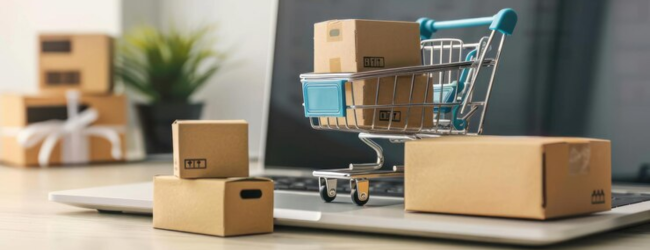Table of contents
- Step 1: Choose Your Niche and Products
- Step 2: Find Reliable Suppliers
- Step 3: Set Up Your Online Store
- Step 4: Handle Legal and Financial Aspects (Crucial for India)
- Step 5: Develop a Marketing Strategy
- Step 6: Manage Operations and Customer Service
- Challenges of Dropshipping in India
- Tips for Success in Indian Dropshipping
- Conclusion
- Frequently Asked Questions (FAQs)
India’s e-commerce market is booming! Valued at around US$83 billion in 2024 and projected to grow significantly (expected CAGR of 15% between 2024-2027), there’s never been a better time to consider starting an online business. One popular and accessible model is dropshipping.
But what exactly is dropshipping? Simply put, it’s a retail fulfillment method where you, the seller, don’t keep the products you sell in stock. Instead, when a customer buys something from your online store, you purchase the item from a third-party supplier (like a wholesaler or manufacturer), who then ships the product directly to the customer. You act as the storefront and marketer, earning profit on the price difference.
Sounds interesting? If you’re wondering how to start a dropshipping business in India, you’re in the right place. This guide provides a step-by-step roadmap, covering everything from finding products to navigating legal requirements specific to the Indian market.
Let’s dive in!
Step 1: Choose Your Niche and Products

Choosing the right niche (a specialized segment of the market) is crucial for success. Don’t try to sell everything to everyone.
Why Niche Down? Focusing on a specific niche helps you:
- Identify your target audience more easily.
- Tailor your marketing efforts effectively.
- Build expertise and brand authority.
- Face potentially less competition than in broad categories.
How to Research Niches:
- Passion vs. Profit: Consider niches you’re passionate about, but always validate them with market demand.
- Market Research: Use tools like Google Trends to check search interest over time in India. Analyze best-selling items on marketplaces like Amazon India and Flipkart.
- Competitor Analysis: Identify potential competitors. See what they sell, how they price items, and their marketing strategies. Look for gaps or underserved segments.
- Profitability: Research potential product margins. Factor in supplier costs, shipping, and marketing expenses.
Profitable Dropshipping Niches in India (Examples):
- Health and Wellness: Fitness equipment (yoga mats, resistance bands), organic supplements, wellness trackers.
- Beauty and Personal Care: Skincare (especially niche like K-beauty or organic), men’s grooming kits.
- Home Décor & Furnishings: Smart home gadgets, unique décor items, home office accessories (ergonomic chairs, webcam stands).
- Eco-Friendly Products: Sustainable home goods, reusable items, biodegradable products.
- Niche Fashion & Accessories: Sustainable fashion, handcrafted jewelry, specific apparel styles (techwear).
- Pet Supplies: Specialized food, unique toys, grooming tools for specific pets.
- Baby Products: Essential gear, organic baby care items.
- Personalized Items: Custom mugs, engraved jewelry, personalized phone cases.
Key takeaway: Research thoroughly to find a niche with good demand, reasonable competition, and decent profit potential in the Indian context.
Step 2: Find Reliable Suppliers
Your supplier is the backbone of your dropshipping business. Their reliability directly impacts your customer satisfaction and brand reputation.
Importance of Reliable Suppliers: They ensure product quality, timely shipping, and proper packaging. Poor suppliers lead to delays, damaged goods, and unhappy customers.
Types of Suppliers:
- Indian Suppliers:
- Pros: Potentially faster shipping within India, easier communication, better understanding of the local market, easier GST compliance.
- Cons: May have a smaller product selection compared to international giants, finding dedicated dropshipping-friendly suppliers can take effort.
- Where to Find:
- Supplier Directories: IndiaMART, TradeIndia, Wholesalebox. (You often need to contact suppliers directly to discuss dropshipping arrangements).
- Specialized Platforms: Qikink, Printrove (excellent for print-on-demand clothing/accessories), Baapstore, Seasonsway.
- Social Commerce Platforms: Meesho, GlowRoad (popular, but quality can vary).
- International Suppliers (e.g., AliExpress, CJDropshipping):
- Pros: Massive product variety, often very low product costs.
- Cons: Longer shipping times to India (a major challenge), potential customs duties/delays, communication barriers, quality control can be harder.
- How to Use: Often integrated via apps on platforms like Shopify (e.g., DSers for AliExpress, Spocket, Zendrop).
- Vetting Suppliers:
- Communicate: Contact potential suppliers. Ask about their dropshipping process, shipping times, return policy, and product quality.
- Order Samples: Always order samples yourself to check product quality, packaging, and actual shipping duration.
- Check Reviews: Look for reviews or testimonials from other retailers if possible.
- Establish Agreements: Have clear terms regarding order processing, shipping expectations, and handling returns/refunds.
Key takeaway: Prioritize supplier reliability and transparent communication. For the Indian market, starting with reliable Indian suppliers can mitigate common shipping time issues.
Step 3: Set Up Your Online Store

This is your digital storefront where customers will browse and buy your products.
Platform Options:
- E-commerce Platforms (Recommended):
- Shopify: Very popular globally and in India. User-friendly interface, numerous themes, extensive app store with dropshipping integrations (DSers, Spocket, Qikink, Printrove etc.). Offers India-specific pricing plans (e.g., first 3 months for ₹20/mo). [External Link: Shopify India Dropshipping Page – https://www.shopify.com/in/dropshipping]
- WooCommerce: A free WordPress plugin. Highly customizable and flexible, requires a bit more technical setup (WordPress hosting needed). Good for those familiar with WordPress.
- Wix: Another website builder with e-commerce capabilities and dropshipping integrations.
- Marketplaces (Less Ideal for Branding): Selling on Amazon India or Flipkart is possible, but building your own brand is harder, and GST registration is often mandatory from day one. These are more like additional sales channels rather than primary platforms for typical dropshipping.
Store Design & Setup:
- Domain Name: Choose a memorable domain name reflecting your brand/niche.
- Theme/Design: Select a clean, professional, and mobile-responsive theme. Most purchases in India (around 75%) happen on mobile!
- Product Pages: Write clear, compelling product descriptions. Use high-quality images/videos. Be transparent about shipping times.
- Essential Pages: Create ‘About Us’, ‘Contact Us’, ‘Shipping Policy’, and ‘Return & Refund Policy’ pages.
- User Experience: Ensure easy navigation and a smooth checkout process.
Key takeaway: Choose a platform like Shopify or WooCommerce to build your own branded store. Focus on a professional look and excellent user experience, especially on mobile.
💡 Pro Tip: If you want to start a business but have too many doubts, connect with business experts on Boss Wallah for guidance – https://bw1.in/1116
Step 4: Handle Legal and Financial Aspects (Crucial for India)
Navigating the legal and financial requirements is essential to operate smoothly in India. Don’t skip this step!
Business Registration:
- You need to register your business. Common structures include:
- Sole Proprietorship: Easiest to set up, minimal compliance, but unlimited liability. Often registered under the local Shop and Establishment Act.
- Limited Liability Partnership (LLP) or Private Limited Company: Offers limited liability (protects personal assets) but involves more compliance and setup cost. Registered with the Ministry of Corporate Affairs (MCA).
- Consult a Chartered Accountant (CA) or legal professional to choose the right structure.
GST Registration (Goods and Services Tax):
- General Rule: GST registration is mandatory if your annual turnover exceeds ₹40 lakhs for goods or ₹20 lakhs for services (thresholds may differ for certain states).
- E-commerce Specifics: Crucially, GST registration is generally considered mandatory for anyone selling goods online through e-commerce platforms (like Amazon, Flipkart) or making inter-state sales, irrespective of turnover. While dropshipping directly from your own website might initially fall under the turnover threshold if sales are only within your state, mandatory registration is often required sooner rather than later for smooth operations (e.g., working with compliant suppliers, using certain payment gateways).
- Obtaining GSTIN: Register on the official GST portal [External Link: GST Portal – https://www.gst.gov.in/]. You’ll receive a unique Goods and Services Tax Identification Number (GSTIN).
- Compliance: You need to file regular GST returns (e.g., GSTR-1 monthly) and can claim Input Tax Credit (ITC) on business expenses.
- Recommendation: Get GST registration early to avoid issues with suppliers, payment gateways, and legal compliance. Consult a CA for clarity specific to your model. [Internal Link: See our detailed GST Guide for E-commerce Sellers – /gst-guide-ecommerce]
Import Export Code (IEC):
- Required if you source products from suppliers outside India.
- Obtain it from the Directorate General of Foreign Trade (DGFT) website. [External Link: DGFT Portal – https://www.dgft.gov.in/]
- Payment Gateways:
- To accept online payments (Credit/Debit Cards, UPI, Netbanking, Wallets).
- Popular Indian Gateways: Razorpay, PayU, Instamojo, Cashfree Payments. They understand the Indian market and prominently feature UPI (which accounts for over 50% of e-commerce transactions in India!).
- International Options: PayPal, Stripe (also operate in India).
- Factors to Consider: Transaction fees (TDR), setup fees, annual maintenance charges (AMC), settlement time, ease of integration, security (PCI DSS compliance), supported payment methods.
- Business Bank Account: Open a separate current account for your business to keep finances organized.
Key takeaway: Legal and tax compliance (especially GST) is non-negotiable in India. Register your business, get your GSTIN (highly recommended early on), obtain an IEC if importing, and set up a reliable payment gateway. Budget for these setup costs.
Step 5: Develop a Marketing Strategy
You have a store, products, and suppliers – now you need customers! Marketing is essential to drive traffic.
Know Your Audience: Understand your target customers in India – their preferences, where they hang out online, and what motivates them.
Marketing Channels:
- Social Media Marketing: Very effective in India. Use platforms like Instagram, Facebook. Run targeted ads, engage with users, use relevant hashtags. Visual content works well for many niches.
- Search Engine Optimization (SEO): Optimize your store and product pages for relevant keywords (like “buy [product niche] online India”) to attract organic traffic from Google. [Internal Link: Learn Basic SEO for Your Store – /basic-seo-guide]
- Paid Advertising (PPC): Google Ads (Search & Shopping Ads) and Facebook/Instagram Ads can drive targeted traffic quickly but require a budget and careful management. [External Link: Google Ads Help Center – https://support.google.com/google-ads/]
- Content Marketing: Create blog posts, guides, or videos related to your niche to attract, engage, and build trust with potential customers.
- Influencer Marketing: Collaborate with Indian influencers relevant to your niche to promote your products.
- Email Marketing: Build an email list and send newsletters, promotions, and abandoned cart recovery emails.
- Budgeting: Allocate a budget for marketing activities. Start small, test different channels, track results, and scale what works.
Key takeaway: A proactive marketing strategy is vital. Focus on channels where your target Indian audience is active, particularly social media and search engines.
Step 6: Manage Operations and Customer Service

Smooth operations and excellent customer service build loyalty and repeat business.
Order Fulfillment Process:
- When an order comes in, you need to forward it to your supplier promptly (many Shopify/WooCommerce apps automate this).
- Pay the supplier their wholesale price for the product + shipping.
- The supplier ships the product directly to your customer.
Shipping & Tracking:
- Communicate estimated shipping times clearly on your product pages and order confirmations. Be realistic, especially if using international suppliers.
- Obtain tracking numbers from your supplier and share them with your customers.
Returns & Refunds:
- Have a clear and fair return/refund policy visible on your website.
- Coordinate returns with your supplier. Understand their return process beforehand. Handling returns can be complex in dropshipping, so clear communication is key.
Customer Service:
- Be responsive to customer inquiries (emails, messages).
- Handle issues professionally and empathetically. Excellent service can turn a negative experience into a positive one.
Key takeaway: Streamline your order process, be transparent about shipping, have a clear return policy, and prioritize excellent customer service.
Challenges of Dropshipping in India
While promising, dropshipping in India has its challenges:
- Shipping Times & Logistics: Especially with international suppliers, shipping can take weeks, leading to customer dissatisfaction. India’s own logistics network is improving but can still face challenges in certain areas.
- Supplier Reliability: Finding consistently high-quality and reliable suppliers requires effort and vetting.
- Quality Control: Since you don’t handle products, ensuring consistent quality can be difficult.
- Competition & Margins: The low barrier to entry means high competition, potentially leading to lower profit margins, especially initially.
- Returns Management: Handling returns can be logistically complex and costly.
- GST & Compliance: Navigating GST and other regulations requires diligence.
- Building Trust: Establishing credibility without a physical product presence takes time and consistent effort.
Tips for Success in Indian Dropshipping

- Focus on a Specific Niche: Avoid being too general.
- Prioritize Supplier Quality: Thoroughly vet suppliers, preferably starting with reliable Indian ones.
- Invest in Your Store: Create a professional, trustworthy online store.
- Be Transparent: Clearly communicate shipping times and policies.
- Master Marketing: Learn digital marketing or hire someone who can. Focus on reaching your Indian target audience.
- Provide Stellar Customer Service: This builds trust and repeat business.
- Manage Finances: Keep track of income and expenses carefully. Understand your margins.
- Be Patient & Persistent: Success rarely happens overnight. Learn from mistakes and adapt.
Need Expert Guidance?
Starting a business can be challenging, but you don’t have to do it alone! At Boss Wallah, our 2,000+ business experts are ready to provide valuable insights and guidance. Whether you need help with marketing, finance, sourcing, or any other area of any business, our business experts are here to help you succeed- https://bw1.in/1116
Confused about Which Business to Start?
Want to start your own business but unsure which one to choose? Explore Boss Wallah, where you’ll find 500+ courses by successful business owners, featuring practical, step-by-step guides on starting and growing various businesses.
Find your perfect business idea today – https://bw1.in/1111
Conclusion
Starting a dropshipping business in India in 2025 presents a fantastic opportunity, tapping into a rapidly growing e-commerce market. The model offers low startup costs and flexibility. However, success requires careful planning, thorough research (especially in niche and supplier selection), diligent handling of legal and financial requirements like GST, effective marketing tailored to the Indian audience, and a strong commitment to customer service.
By following the steps outlined in this guide, understanding the potential challenges, and focusing on building a trustworthy brand, you can lay a solid foundation for your dropshipping venture in India. It takes effort and persistence, but the potential rewards in this dynamic market are significant.
Frequently Asked Questions (FAQs)
1. Is dropshipping legal in India?
Yes, dropshipping is a legal business model in India, provided you comply with all regulations, including business registration, GST laws, import/export regulations (if applicable), and consumer protection laws.
2. How much does it cost to start dropshipping in India?
Startup costs are relatively low compared to traditional retail but not zero. Budget for:
- E-commerce platform fees (e.g., Shopify monthly plan, starting low like ₹20/mo initially but increasing later, or WooCommerce hosting)
- Domain name registration (approx. ₹500-₹1000/year)
- Business registration & GST fees (can vary, consult a professional)
- Ordering product samples
- Marketing budget (can start small, e.g., ₹5,000-₹10,000/month, and scale up)
3. Is dropshipping profitable in India?
It can be profitable, but it’s not a guaranteed path to quick riches. Profitability depends heavily on your chosen niche, product margins, supplier costs, marketing effectiveness, and operational efficiency. Margins can be thin initially due to competition. Success requires time, effort, and smart business decisions.
4. Do I need GST registration for dropshipping in India?
It’s highly recommended, and often mandatory. While the general threshold is ₹40 lakh turnover for goods, selling online (especially via marketplaces or interstate) usually requires GST registration regardless of turnover. Getting registered early avoids compliance issues. Consult a CA for advice specific to your situation.
5. How do I find reliable dropshipping suppliers in India?
Use Indian directories like IndiaMART, TradeIndia (vet carefully), specialized platforms like Qikink, Printrove (for POD), Baapstore, or explore social commerce platforms like Meesho (check quality). Always order samples and communicate clearly about dropshipping terms. [Internal Link: Guide to Finding Indian Dropshipping Suppliers – /find-indian-dropshipping-suppliers]
6. Can I dropship from AliExpress/international suppliers to India?
Yes, you can, often using Shopify apps like DSers. However, be prepared for long shipping times (potentially 3-5 weeks or more), customs clearance processes, and the need for an Import Export Code (IEC). Clearly communicate these long shipping times to customers.
7. What’s the best platform to start dropshipping in India?
Shopify is widely regarded as one of the most user-friendly and feature-rich platforms for beginners, with strong app support for dropshipping in India. WooCommerce (on WordPress) is a powerful, flexible alternative if you prefer more control and are comfortable with WordPress.
8. What are the biggest risks of dropshipping in India?
The main risks include unreliable suppliers, long shipping times (especially international), difficulty managing returns, intense competition leading to low margins, and challenges in ensuring consistent product quality and customer satisfaction. Navigating GST compliance correctly is also crucial.


